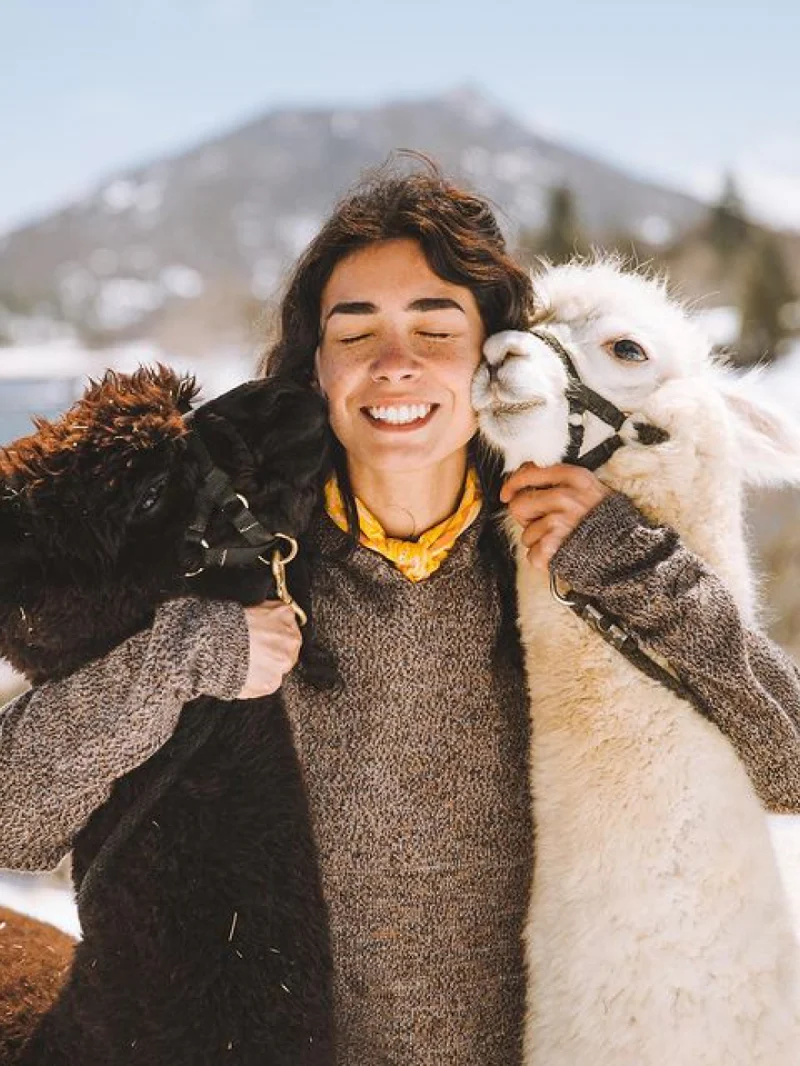


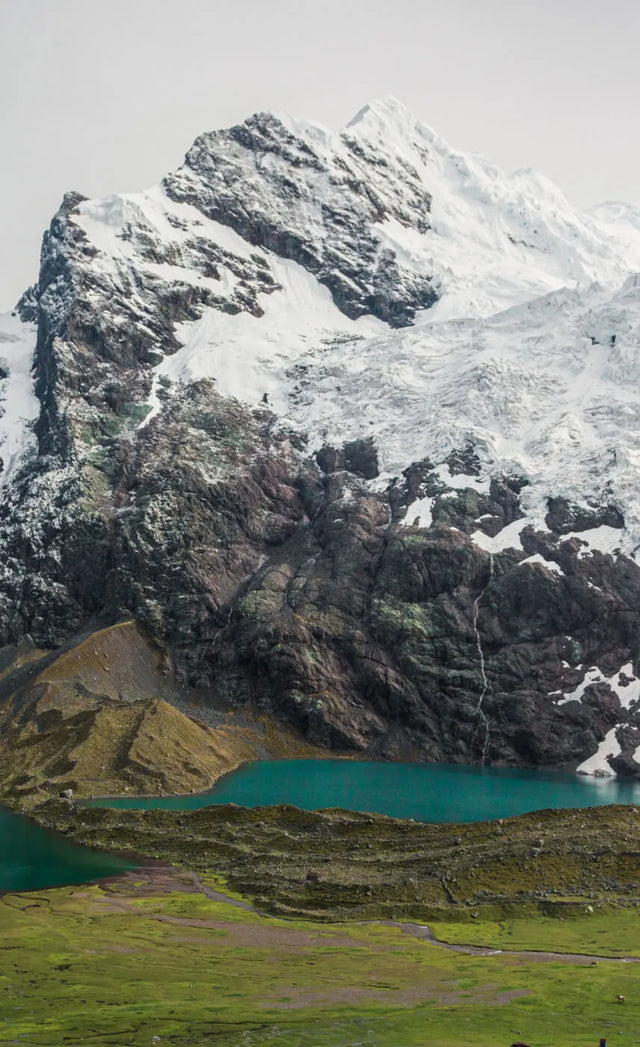
A few months ago, our team headed to Ausangate We wanted to experience the hidden glacial lakes and meet the sacred mountain Apu Ausangate. We ventured out with Noah Turpo Cruz, a Peruvian adventure photographer and now a dear friend of mine. He’d planned the route a few days prior. Noah is the man you want by your side, when traveling in and around the Andes.
Here you'll find:
• The best ways to experience Ausangate
• How the mountain is changing
•
How to get to Ausangate
•
Its meaning to the local people
•
When to visit and what to bring
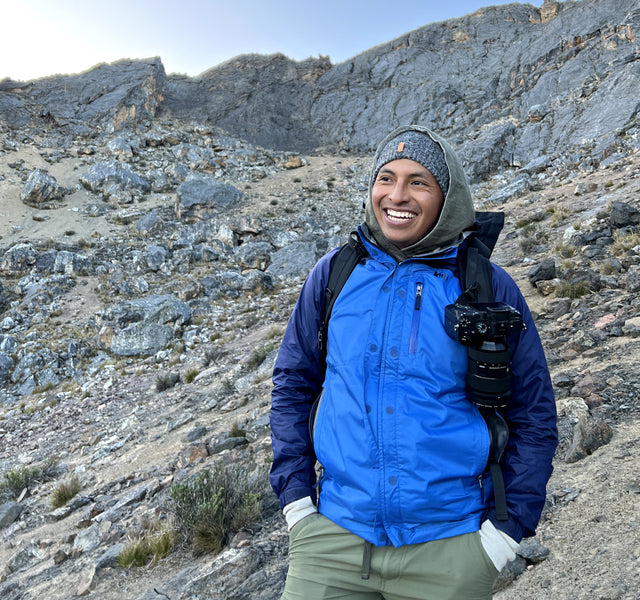
Noah Turpo Cruz at Ausangate
Noah's story
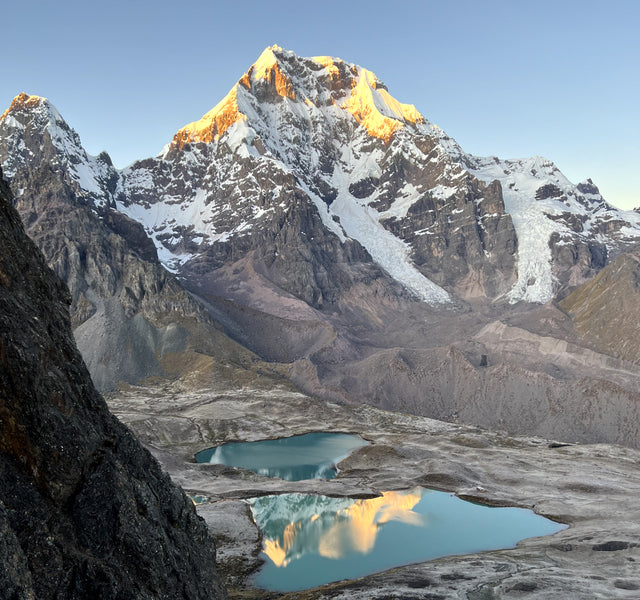
North side of Ausangate
Experiencing Ausangate
“For me, Ausangate has separate faces, and each face is completely different,” describes Noah. When Noah talks about Ausangate, or anywhere in Peru, I’m captivated - whether he’s pouring electrolytes into warm water for me to sip between heaves (from altitude sickness) or FaceTiming from the other side of the equator.


Noah in a local Quechua village near the base of Ausangate


Climate change on the glacier
Noah brings a unique perspective on the local people and the natural landscape. His knowledge is cultivated through his Quechua roots and deep connection to the land. When he describes the mountain now, it’s clear how much it means to him. He describes the north face as patches of exposed black jagged rock, where the ice has melted away. While the south face is persistently blanketed in pearly snow. The ice on the mountain should stay consistent from season to season, but Noah has watched it change over time. “I remember my dad telling me stories about there being more snow on Ausangate when he was a child,” Noah recalls. Similar to Noah, his dad spent much time on and around Ausangate. He passed on this fascination and concern for the mountain to Noah. “Now I’ve witnessed the change in my lifetime. There’s less snow and more rock exposed, especially on the northern side.” There’s a tinge of sadness in Noah's normally cheerful tone when he says this. “I think in 30 years, there will be no more snow on the north side, and all that will be left is craggy black rock.” It’s a stark visual of how our climate is changing and motivation for what we do here at Paka.
"It was the stunning views of Ausangate, and a need to capture their essence, that lead to me become a photographer." - Noah Turpo Cruz, Peruvian guide and photographer



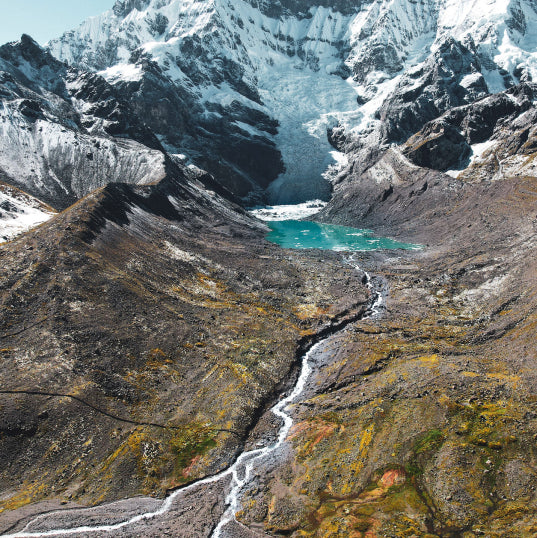
"It was the stunning views of Ausangate, and a need to capture their essence, that lead to me become a photographer." - Noah Turpo Cruz, Peruvian guide and photographer

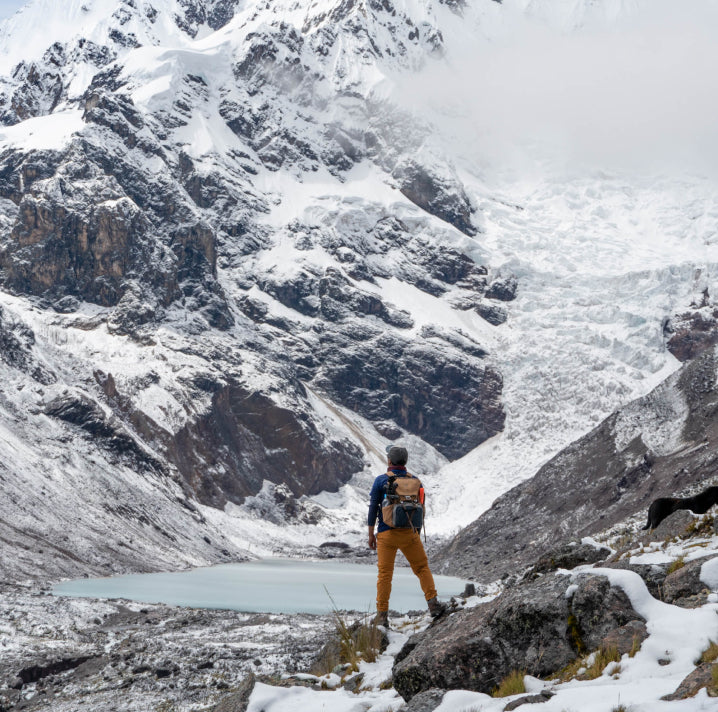
The origin story of Ausangate
There’s a special meaning to this mountain beyond its beauty. Ausangate is known by the locals as "the father of all mountains." For the Inca, he is a spirit (Apu) that protects people and the surrounding mountain ranges. The glacier that melts out of Ausangate feeds Cusco, the Sacred Valley, and even parts of the Amazon river. For that, Ausangate is known as the creator of water.
Noah shared the story of Ausangate (as he's heard it through generations) of how the mountain came to be: "Once, Ausangate and Salkantay were brothers. They were beings living together in the valley of Cusco. A long drought came to the land, and to survive, the brothers had to split ways. Salkantay went west, and Ausangate went east, where he found prosperity. He became very wealthy, finding fertile land where he could grow lots of potatoes and raise many alpacas. Each face offered a different opportunity. On the southeast side, the region was known for its alpacas. On the northern side, there was a large plateau. Here potatoes flourished. With his wealth, Ausangate began to send supplies to his hometown of Cusco. And that's how they survived the drought because of Ausangate." The younger generations living around the mountain don't fully embrace this story as fact. The elder generations, however, still observe Ausangate as very much alive. They deeply honor and respect Apu Ausangate, and make offerings (k'intus) to ensure his protection.

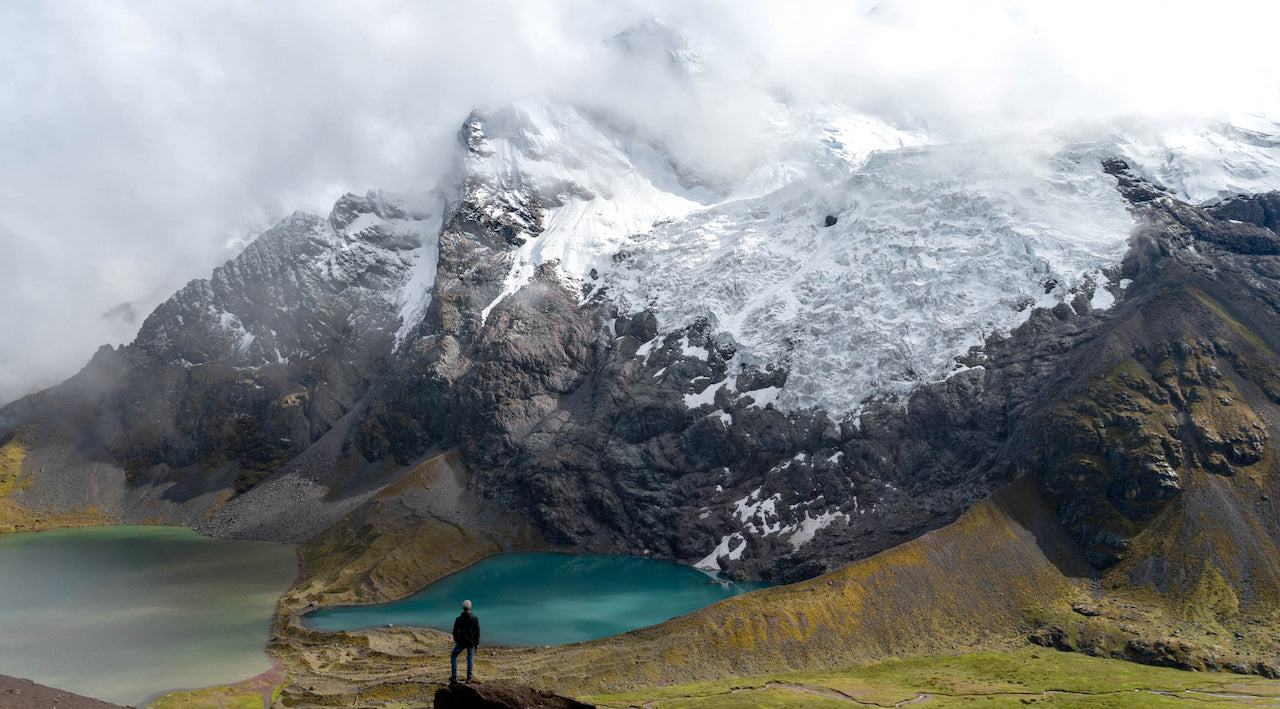


When to visit
Acclimation
While the mountain brings variety from season to season, the most important factor in “when to visit” has to do with your physical well-being. Giving yourself proper time to acclimate to the elevation is crucial, so you don’t end up ill (as I did!). There are a few ways to help your body become accustomed to the altitude, from gradually moving up in altitude to drinking loads of coca tea.
Weather + season
Keeping the season and weather in mind when preparing to climb or hike to Ausangate is essential. Noah describes summer as his favorite season in Ausangate. Summer in Peru lasts four months and begins December 22nd. It’s the region's rainiest season (with the greatest precipitation occurring in December and January). It doesn’t rain all day though - typical showers last one to two hours in the afternoon. Rain in the morning is unlikely, and as an adventure photographer, this creates the perfect opportunity to capture dawn images. Noah explained to me how the season of rain produces the richest colors, both in the sunrise and the land, with rich vegetation and hydrated soil. At the same time, the rain and snow cause the lakes around Ausangate’s base to swell, becoming even more vibrant from mineral-rich runoff.
Notes on the seasons:
• December to May - rainy season (during this time, there are more flowers, and it's greener)
• June to August - dry season (beautiful, clear skies)
• September - season of thunder
• October and November - unpredictable weather
Where to go
The trek to Ausangate is fairly strenuous due to the terrain and the high altitude. If the trek is too challenging, there’s always an option to travel on horseback. The Ausangate trek winds around the mountain, never dipping below 14,000 feet, and generally taking six days to complete. Along this path, you’ll see stunning views of Ausangate and Rainbow Mountain and the icy blue glacial lakes. It's possible to go beyond the path and actually climb Ausangate, from June to late October. However, there’s only one way to the summit, and doing so requires ice-climbing skill and experience. The climb starts from the southeast side of the mountain. Reaching the summit takes most people a week in good conditions. The climb itself, actually only takes two days; a week is necessary to safely acclimate to the altitude.
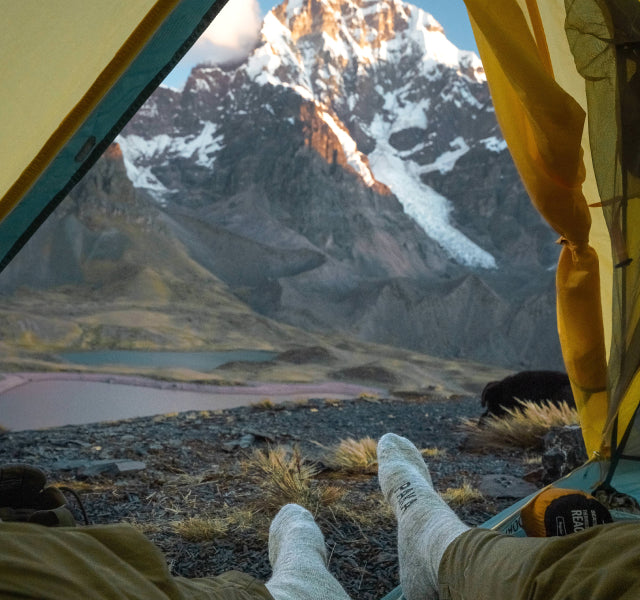
Noah camping out on his way up to Machu Raq'ay
Noah's route
What to bring:
• Sleeping bag - temperatures at Ausangate can reach freezing at night, so you'll need a very warm sleeping bag
• Tent - if you're heading during the rainy season, a tarp is especially important
• Water - at basecamp, you should be able to filter water or boil snow. But ensuring that you drink enough can be a challenge.
• Food - Noah likes to bring dehydrated food because it simplifies the cooking process.
• Coffee - or something to warm you up from the inside.
• Layers - Noah typically wears the Condor and layers it with a down jacket and windbreaker
• Good hiking shoes
• Good hiking socks
• Solar panel for charging - this is important because for Noah to change his camera
• Kitchen goods
• Stove - Noah stack stones around his cook-set on windy days
• Coca tea - for the elevation
Moments from our trek
Come visit
During our time at Ausangate, we enjoyed the brilliant blue lakes, made friends with the local dogs, and basked in the glow of the milky way by night. We visited a local hot spring, ate soup each morning for breakfast, and thoroughly tested our gear.
There's a magic in the air at Ausangate, that is undeniable. It's something we'd love for all of our community to experience. If you want to visit Ausangate, we’ll be happy to connect you with Noah. Alpaca hugs!
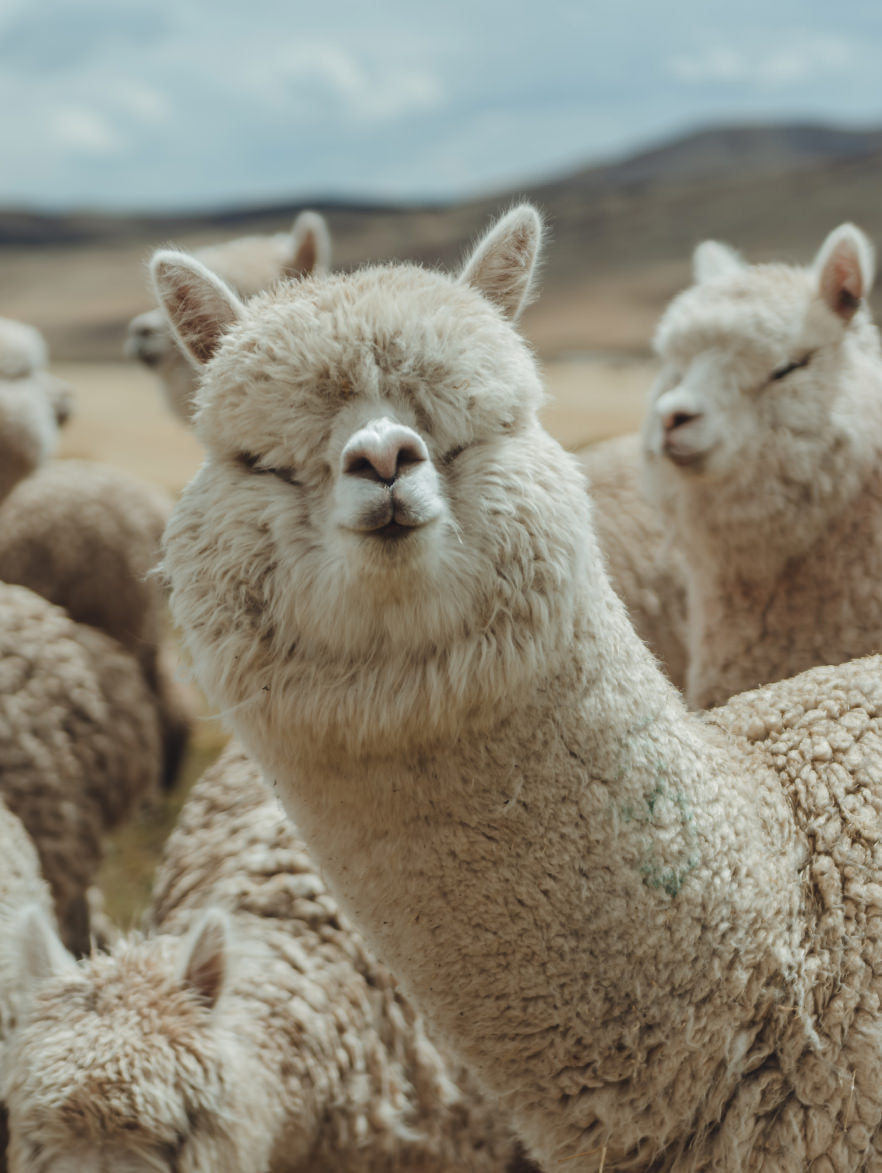
Join the herd.
We grant our community private access to new products and exclusive offers.
